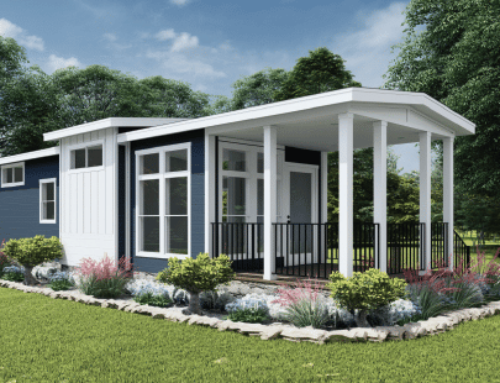In recent years, there has been a growing trend towards sustainable living, driven by environmental awareness and the desire to minimize one’s ecological footprint. This movement has given rise to various lifestyle choices, including embracing tiny living.
Tiny houses, compact apartments, and minimalist lifestyles are gaining popularity as individuals seek to live more sustainably. This shift towards smaller living spaces brings a unique opportunity to explore and implement eco-friendly practices.
This article will delve into sustainability in small packages, focusing on eco-friendly practices that can be adopted for tiny living.
Efficient Space Utilization
One critical principle of tiny living is efficient space utilization. Small dwellings require thoughtful design to maximize functionality without sacrificing comfort.
Sustainable architecture emphasizes using every inch of space intelligently, reducing waste and unnecessary resource consumption. This includes multifunctional furniture, creative storage solutions, and modular designs that allow for flexibility in using limited space.
The essence of tiny living lies in downsizing living spaces, often ranging from 100 to 400 square feet. Compact living spaces promote resource efficiency by requiring fewer materials for construction and reducing energy consumption for heating, cooling, and lighting.
Moreover, the smaller footprint translates into less land use and a more minor environmental impact, a crucial aspect of sustainable living.
Renewable Energy Integration
Incorporating renewable energy sources is a crucial aspect of sustainable living, and it becomes even more critical in tiny homes where space is limited. Solar panels, wind turbines, and other renewable energy technologies can be scaled down to fit the compact nature of small living spaces.
Off-grid living becomes more feasible, reducing reliance on traditional energy sources and minimizing the environmental impact of larger residences.
Tiny homes are ideally designed with energy efficiency in mind. Utilizing passive solar design principles can help maximize natural light and heat, reducing the need for artificial lighting and heating systems.
Additionally, constructing tiny homes often involves environmentally friendly materials, such as reclaimed wood, recycled steel, and sustainable composites. These choices minimize the environmental impact associated with the extraction and processing of raw materials.
Sustainable Materials and Construction
The materials used in constructing tiny homes significantly affect their overall sustainability. Opting for eco-friendly and locally sourced materials helps reduce the carbon footprint associated with transportation.
Furthermore, using recycled or upcycled materials reduces waste and promotes a circular economy. Sustainable insulation, non-toxic paints, and energy-efficient windows are additional elements that can be incorporated into the construction process to enhance environmental friendliness.
One of the most intriguing aspects of tiny living is the opportunity to embrace off-grid living solutions. Many tiny homes have solar panels, wind turbines, or other renewable energy sources, allowing occupants to generate electricity.
This not only promotes energy independence but also reduces reliance on conventional power grids, which are often fueled by non-renewable resources. Off-grid living exemplifies a sustainable approach by harnessing natural resources without depleting them.
Water Conservation Strategies
Tiny living also challenges individuals to be mindful of their water consumption. Implementing water-saving fixtures, such as low-flow toilets and efficient faucets, can significantly reduce water usage.
Additionally, incorporating rainwater harvesting systems and greywater recycling helps maximize the utility of water resources, making tiny homes more self-sufficient and environmentally friendly. In small houses, space constraints extend to water systems, making efficient water use essential.
Water-saving fixtures, such as low-flow faucets and composting toilets, are standard features in tiny houses. Additionally, greywater recycling systems can be implemented to reuse water from sinks and showers for tasks like watering plants. These measures minimize water waste and promote a more sustainable water management approach.
Minimalist Lifestyle
At the heart of tiny living is the embrace of a minimalist lifestyle. Choosing to live with fewer possessions not only reduces the demand for new products but also minimizes waste. Decluttering and adopting a mindset focused on experiences rather than material possessions align with sustainability principles.
This shift towards minimalism promotes conscious consumption and a more environmentally conscious way of life. Tiny living encourages a minimalist lifestyle, which inherently aligns with sustainable values. The philosophy emphasizes owning only what is essential and consciously avoiding unnecessary consumption.
By promoting a culture of quality over quantity, Tiny Living challenges the prevailing consumerist mentality that often leads to overproduction, resource depletion, and environmental degradation.
Community and Shared Resources
Tiny living doesn’t necessarily mean isolated living. Many tiny home communities have emerged where individuals share resources and communal spaces, fostering community while reducing individual resource consumption.
Shared gardens, community kitchens, and cooperative energy initiatives exemplify how tiny living can extend beyond individual dwellings to create more sustainable, interconnected communities. While tiny living is often associated with individualistic pursuits, tiny house communities are growing.
These communities foster a sense of shared responsibility and resource pooling. Shared spaces for gardening, communal kitchens, and collaborative energy initiatives contribute to a more sustainable lifestyle. This communal approach also creates a support system for like-minded individuals seeking to live harmoniously with the environment.
Sustainable Transportation
The location of tiny homes often allows for a more intentional approach to transportation. Living in smaller spaces often means residing in less urbanized areas, promoting a reduced reliance on cars.
Embracing alternative modes of transportation such as bicycles, electric scooters, or even walking contributes to lower carbon emissions and a healthier lifestyle. Furthermore, proximity to public transportation options enhances accessibility without the need for personal vehicles.
Some tiny homes are built on wheels, enabling a nomadic lifestyle. These mobile homes offer the flexibility to relocate, reducing the environmental impact associated with permanent structures. Nomadic tiny living promotes a deeper connection with nature and encourages a conscious awareness of one’s ecological impact as individuals move through different environments.
Waste Reduction and Recycling
Tiny living necessitates a keen focus on waste reduction. With limited storage space, individuals must adopt a more mindful consumption and waste generation approach.
Recycling has become fundamental, and composting systems are often integrated to manage organic waste. Embracing the principles of the circular economy, Tiny Living advocates for repurposing and upcycling materials whenever possible, minimizing the need for disposal.
Challenges and Considerations
While tiny living offers numerous benefits for sustainability, it is not without challenges. Zoning regulations, limited space for storage, and the need for innovative design solutions pose hurdles for enthusiasts.
Additionally, the availability of suitable locations for tiny homes and the initial cost of eco-friendly features can be deterrents. Addressing these challenges requires a collaborative effort from communities, policymakers, and industry stakeholders to create a supportive environment for tiny living.
The Future of Sustainable Tiny Living
As the global awareness of environmental issues continues to grow, sustainable practices like tiny living are likely to gain even more prominence.
Technological advances and a shift in societal values towards conscious living may pave the way for innovative solutions to current challenges.
Whether through further integration of smart home technologies, improvements in sustainable materials, or increased support for tiny house communities, the future holds exciting possibilities for the evolution of tiny living as a sustainable lifestyle choice.
Conclusion
Sustainability in small packages, specifically within the context of tiny living, offers a unique and practical approach to reducing our ecological impact. From efficient space utilization to integrating renewable energy sources, the principles of sustainable living can be effectively applied to tiny homes.
By adopting eco-friendly practices, individuals contribute to the planet’s well-being and experience the benefits of a simpler, more intentional lifestyle. As the movement towards tiny living continues to gain momentum, it promises to inspire a broader shift towards a more sustainable and conscientious way of life.




